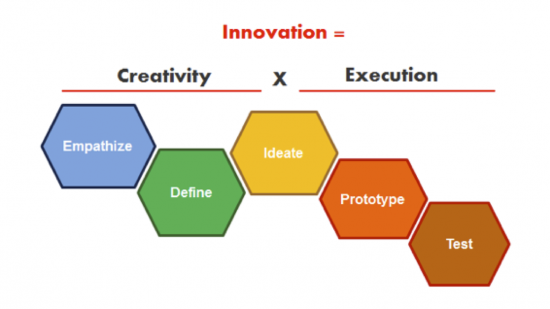This is the second part of a 2 part blog series and you can find the first part here.
After presenting at Smart Industry 2016, I continue to examine how design thinking can drive IoT success.
Applying internet technologies to the world of things offers an ocean of possibilities, but the path to a tangible ROI can be elusive. I’ve noticed that companies who have been successful at it have applied many of the principles of design thinking.

Success in Execution Comes at a Price
The ability to successfully execute on their business case is what separates successful companies from startups. Developing the solution, positioning it with customers, and profitably delivering on its value proposition becomes embedded into the DNA of most companies as they grow their revenues and business.
In order to maximize productivity and profitability, internal processes are solidified and jobs become defined by the tasks and responsibilities. Digitization changes the rules of the game. Now the processes and silos that have helped the business grow stand in the way of continued success.
Driving Creativity through Empathy
Companies that have successfully implemented large-scale IoT platforms addressed the Creativity side of the equation and focused teams on spending more time empathizing with their peers to redefine requirements.
Let’s consider the case of a large North American Utility that defined the business case for its Smart Meter platform. They had the foresight to create an entirely new organization made up of IT architects, power distribution operations experts, and consultants. The team spent their first year breaking down silos that separated IT from OT so they could fully understand the business drivers and translate these into solution requirements.
In addition to the initial drivers of reducing power theft and revenue leakage, the team identified additional power load management benefits and identified ways to resell capacity to local municipalities and telecom operators. This substantially increased the ROI of the $1B platform while reducing the impact on rate payers. The project also defined the industry-leading Automated Metering Infrastructure (AMI) technology which was the first large-scale deployment of a two-way communications platform.
The emphasis on creativity is the main value of design thinking and is critical for IoT success. Other successful IoT implementations have all required similar shifts in organizational culture, across the manufacturing, retail, and financial services industries. By combining IT & OT teams into a single IoT organization and focusing on processes that built trust and collaboration, these companies have been able to drive a greater level of understanding of the real problem and a workable solution.
Have you seen design thinking lead to IoT success? Comment below to keep the conversation going.
Thank you for writing about design thinking, Mahadev. It was pleasure reading. As David Kelly, IDEO founder says, we need to “flip” a lot of individuals to make them creatively confident to drive the innovation.